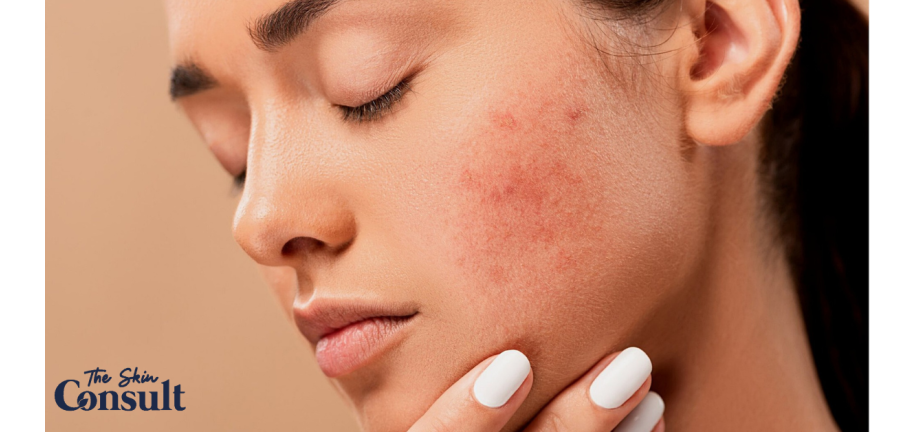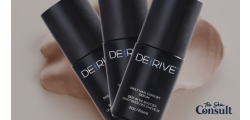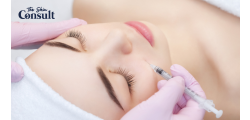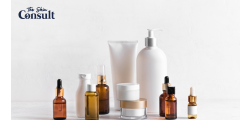Introduction
Hyperpigmentation is a common skin concern that affects people of all ethnicities, including South Asians. South Asians have diverse skin tones, ranging from fair to deep, and are more prone to specific types of hyperpigmentation, such as melasma and post-inflammatory hyperpigmentation. In this comprehensive guide, we will explore the basics of hyperpigmentation, its causes, and a step-by-step approach to creating a tailored skincare regimen for South Asians.
Understanding Hyperpigmentation
Hyperpigmentation refers to the darkening of certain areas of the skin due to an excess of melanin, the pigment responsible for skin, hair, and eye colour. Several factors contribute to hyperpigmentation, and it's crucial to understand these causes before establishing a regimen:
- Sun Exposure: Prolonged sun exposure triggers the production of melanin, resulting in sunspots and uneven pigmentation.
- Hormonal Changes: Hormonal fluctuations, such as those occurring during pregnancy or while taking birth control, can lead to melasma, a specific type of hyperpigmentation.
- Acne and Inflammatory Conditions: Post-inflammatory hyperpigmentation can develop after acne breakouts, injuries, or skin conditions like eczema.
- Genetics: Some individuals are genetically predisposed to hyperpigmentation, making them more susceptible to its effects.
- Aging: As we age, the skin's natural processes become less efficient, leading to a decrease in collagen and elastin production and an increase in hyperpigmentation.
Creating a Basic Hyperpigmentation Regimen
To effectively address hyperpigmentation in South Asian skin, it is essential to create a well-rounded skincare regimen that considers the unique characteristics of this skin type. Here's a step-by-step guide to get you started:
Step 1: Consult a Dermatologist
Before starting any skincare regimen, it's advisable to consult a dermatologist, especially if your hyperpigmentation is severe or persistent. A dermatologist can diagnose the specific type of hyperpigmentation you have and recommend appropriate treatments.
Step 2: Sun Protection
Sun protection is the cornerstone of any hyperpigmentation regimen. South Asian skin is susceptible to sun-induced hyperpigmentation and UV damage, so applying sunscreen with broad-spectrum protection (SPF 30 or higher) is vital. Reapply sunscreen every two hours when outdoors. Choose a sunscreen formulated for sensitive or acne-prone skin, as South Asians are often prone to these skin concerns.
Step 3: Gentle Cleansing
Start your regimen with a gentle cleanser to remove dirt, oil, and makeup without stripping the skin of its natural moisture. Avoid harsh scrubs, which can exacerbate hyperpigmentation.
For those seeking an excellent cleanser tailored for highly pigmented skin, we highly recommend PCA Skin Pigment Bar. This exceptional product serves as the ideal cleansing companion within PCA's pigment control program, meticulously crafted to elevate and sustain the complexion-refining outcomes achieved by its companion products. Formulated with exfoliating kojic, azelaic, and tannic acids, it adeptly manages breakouts and reduces hyperpigmentation while effectively purifying the skin from impurities. The infusion of soothing aloe vera, witch hazel, and rosewood extracts further works to pacify inflammation, leaving your complexion radiant and refreshed.
Alternatively, consider the Jan Marini C-ESTA Cleansing Gel - 8 oz, a powerful Vitamin C-enriched cleanser suitable for all skin types, presenting a sumptuous lather. This advanced formula, containing Vitamin C and DMAE, stands as a potent skin-conditioning cleanser that indulges your skin with a luxurious cleansing experience. Whether your skin type is oily, dry, or in between, this Vitamin C face cleanser is a versatile choice for achieving a revitalized and refreshed complexion.
Step 4: Targeted Ingredients
Incorporate products with active ingredients known to reduce hyperpigmentation. South Asians can benefit from using the following ingredients:
- Vitamin C: A potent antioxidant, vitamin C helps to lighten dark spots and brighten the complexion.
- Niacinamide: This vitamin B3 derivative can reduce melanin production, making it effective for addressing hyperpigmentation.
- Alpha Hydroxy Acids (AHAs): AHAs like glycolic and lactic acid can help exfoliate the skin, reducing the appearance of dark spots.
- Retinoids: Over-the-counter or prescription retinoids can encourage skin cell turnover and fade hyperpigmentation.
- Kojic Acid: A natural skin-lightening agent, kojic acid can be used to fade dark spots.
- Licorice Root Extract: This natural ingredient has skin-lightening properties and can be found in many skincare products.
Explore The Skin Consult Marketplace, where an array of products meticulously crafted for hyperpigmented skin concerns awaits. Our user-friendly online store is thoughtfully designed, allowing you to conveniently browse and shop based on active ingredients. Navigate through the available options effortlessly, and discover a curated selection tailored to address hyperpigmentation. Each product is seamlessly marked to indicate its suitability for specific skin types and concerns, ensuring a personalized and informed shopping experience. Explore our platform, and empower yourself to find the perfect solutions for your skincare needs.
Step 5: Establish a Routine
Consistency is key when treating hyperpigmentation. Create a skincare routine that includes morning and evening applications of the products mentioned above. However, introduce new products gradually to prevent irritation.
Morning Routine:
- Cleanse
- Apply a vitamin C serum
- Moisturize
- Apply sunscreen
Evening Routine:
- Cleanse
- Apply a niacinamide serum or other targeted ingredient
- Moisturize
Start with a simpler routine and gradually increase the number of products over time as your skin becomes acclimated.
Step 6: Monitor and Adjust
Monitor your skin's response to the products you're using. It may take several weeks to see noticeable improvements in hyperpigmentation. Be patient and make adjustments as needed. If you experience irritation or no improvement, consult your dermatologist for guidance.
Step 7: Lifestyle Factors
In addition to skincare products, consider the following lifestyle factors to improve your hyperpigmentation regimen:
- Diet: Eating a balanced diet rich in antioxidants can benefit your skin health. Foods like berries, leafy greens, and nuts contain essential nutrients for skin repair.
- Hydration: Staying well-hydrated supports overall skin health and can help with the healing process.
- Stress Management: Chronic stress can exacerbate skin issues. Practice stress-reduction techniques such as meditation and yoga.
- Sleep: Ensure you get enough rest, as your skin repairs and regenerates during sleep.
- Avoid Picking and Squeezing: Picking at blemishes or hyperpigmented areas can worsen the condition and lead to further discolouration.
Step 8: Professional Treatments
For persistent hyperpigmentation or for those seeking expedited results, explore professional treatments like chemical peels, microdermabrasion, or laser therapy. An esthetician can guide you towards the optimal treatment based on your specific skin type and concerns. Schedule a virtual consultation with our available estheticians here.
Conclusion
Creating a basic hyperpigmentation regimen for South Asians involves a multifaceted approach that addresses the specific causes of hyperpigmentation in this population. Sun protection, targeted skincare ingredients, a consistent routine, and attention to lifestyle factors are all crucial components of an effective regimen. Remember that results take time, and it's essential to consult a dermatologist for personalized guidance and to ensure you're on the right track to achieving a more even and radiant complexion. By following these steps, South Asians can take control of their hyperpigmentation and enjoy healthier, more vibrant skin.







